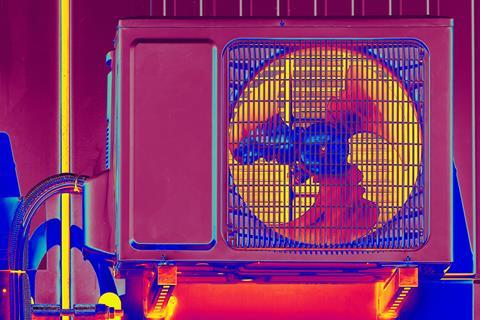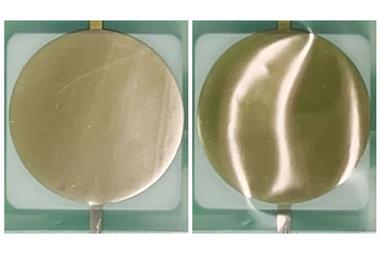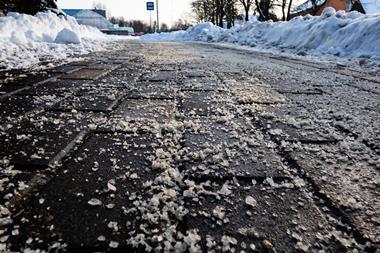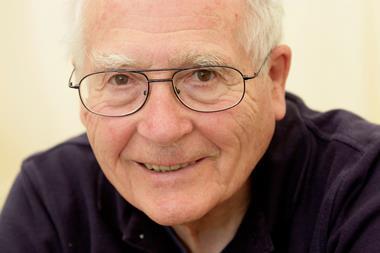Heat pumps are seen as one important way to reduce carbon emissions from heating and many countries, including the UK, have implemented schemes to encourage their installation. The technology has deep roots with a long and environmentally controversial history, however, and at the same time as politicians are trying to speed up its adoption, scientists are working to minimise these pumps’ carbon footprint. Top scientific journals are regularly filled with proposals for future versions of the technology. So is heat pump technology a sinner or a saint in the battle against climate change? And can science improve this technology?

What are heat pumps?
They are sometimes described as refrigerators or air conditioners in reverse – although in the scientific literature they’re more likely to be referred to simply as refrigeration technologies. The reason for this is that the origins of what we now consider refrigeration dates back to the 19th century, whereas other applications based on exactly the same physical principle are more recent.
Whereas heat naturally flows from hot to cold, energy can be expended to push it in the opposite direction. In the traditional vapour compression cycle for refrigeration first patented by James Harrison in 1855, a volatile fluid is depressurised in a cold reservoir (the cooler area in the system, in this case inside the fridge), causing it to vaporise and absorb heat. It is then pumped into a relatively high-pressure hot reservoir (outside the fridge), where it condenses and releases the heat it absorbed on boiling.
Harrison used sulfuric ether, which is flammable, and many other pioneers of refrigeration used flammable and/or toxic materials such as ammonia. When General Motors hit upon chlorofluorocarbons (CFCs) – which are non-toxic, non-flammable and have moderate boiling points at atmospheric pressure – in the late 1920s, domestic refrigerators became viable. CFCs seemed like the ideal refrigerant, but in the 1970s their ozone-layer destroying properties became known. Air conditioners that could also function as heaters were demonstrated in 1945, but the technology was not widely adopted until the 1970s.
Why are people so excited about heat pumps?
They can be far more efficient than traditional heating. Their efficiency can actually go well over 100% – sort of. Normally, the efficiency of a process is the energy you get out as useful work divided by the energy you put in, with the heat being what’s lost to the environment. If you get more out than you put in, then the system has gained energy – something that is physically impossible.
But what if heat is the desired output? A traditional heater takes the energy in a fuel and converts it to heat – the efficiency is simply a measure of what proportion of the energy goes into heating the right thing. A heat pump, however, doesn’t deliberately convert the input energy to heat, it uses it to move heat energy from the cold reservoir (outside the building) to the hot reservoir (inside the building). Provided it takes less than a joule of energy to move each joule of heat energy, the device has an efficiency of over 100%. The efficiency can even go above 400% for some models.
OK, so what’s the problem?
In the short term, the biggest issue is that air conditioning and heat pumps already consume about 20% of the electricity used by buildings around the world, although this is likely to be an underestimate. Rising demand as a result of warmer temperatures due to climate change will increase buildings’ energy consumption further. Rapid growth in air conditioning in countries such as India and China is an issue as they are largely dependent on fossil fuels such as coal to generate their electricity.
As the world moves away from fossil-fuel based electricity generation, however, this brings another climate problem to the fore – the refrigerants. CFCs have been phased out but their replacements – hydrofluorocarbons – tend to be potent greenhouse gases: one 2009 study projected that they could be responsible for up to 20% of CO2-equivalent emissions by 2050. An amendment to the Montreal Protocol in 2016 calls for an 85% reduction in these gases by 2036.
Alternatives are not problem free either. Hydrofluoroolefins break down much more quickly in the environment, but there are concerns that they produce toxic byproducts and some of the proposed replacements are on a list of PFAS chemicals that the EU is currently considering restricting. Moreover, many of them are slightly flammable, which means altering the design of heat pumps and air conditioners to prevent them catching fire. Multiple alternatives – some of them mixtures – are being developed.
Are there any refrigerant-free technologies in the pipeline?
Maybe. Caloric materials are substances which undergo a phase transition to a state with a different entropy when they are subjected to some kind of field. When the state becomes ordered, the entropy of the material decreases, and as the entropy of the system overall cannot decrease, this means that heat must be released to the surroundings. When the system becomes more ordered, it takes in heat from its surroundings.
Magnetocaloric materials, which respond to magnetic fields, have been studied for decades. In 2006, however, Neil Mathur at the University of Cambridge and colleagues suggested that, in thin films, the electrocaloric effect could be large enough to be useful in refrigeration. Subsequently, researchers have also studied mechanocaloric effects, in which materials undergo phase transitions in response to mechanical forces.
In 2022, researchers in the US also demonstrated a prototype refrigeration cycle using the ionocaloric effect. Instead of applying an external field, they used the fact that a liquid cools its surroundings when it dissolves a salt because the liquid state has higher entropy than the solid. This allowed them to produce a cycle of heating and cooling by repeatedly dissolving a salt and separating the solution by electrodialysis. The researchers have started a spinout company and are now working to commercialise the technique.
So what does the future hold?
The carbon footprint of heating and air conditioning is huge, but at present the biggest problem is simply the electricity needed to power the machines – air conditioners especially. Therefore, any technology that wished to truly supersede vapour compression would have to be at least as energy efficient. Calorics are currently only likely to be useful in niche applications, but with optimisation their efficiency could improve and they could go mainstream.
There has been a flurry of interest in caloric-based systems recently. In addition to the 2022 ionocalorics paper, two recent papers have been published in Science on electrocaloric refrigeration systems, one of which claimed to have shown a ‘very promising’ alternative to vapour compression cooling. Moreover, Mathur’s longtime collaborator Xavier Moya at the University of Cambridge has founded the spinout Barocal to develop barocaloric materials – a type of mechanocaloric material that responds to pressure.

















No comments yet